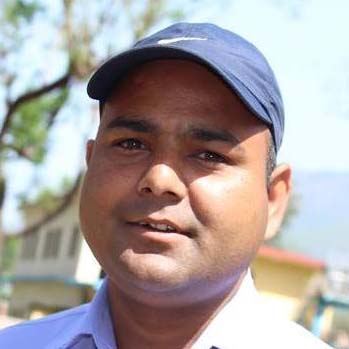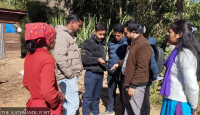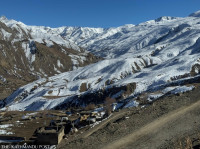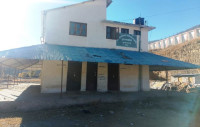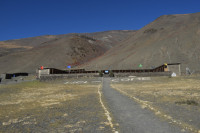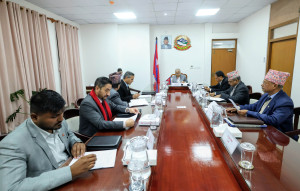Karnali Province
Travel is never safe during festivals in Karnali
Karnali Province has recorded 51 road crashes during the Dashain period this year, according to Nepal Police data.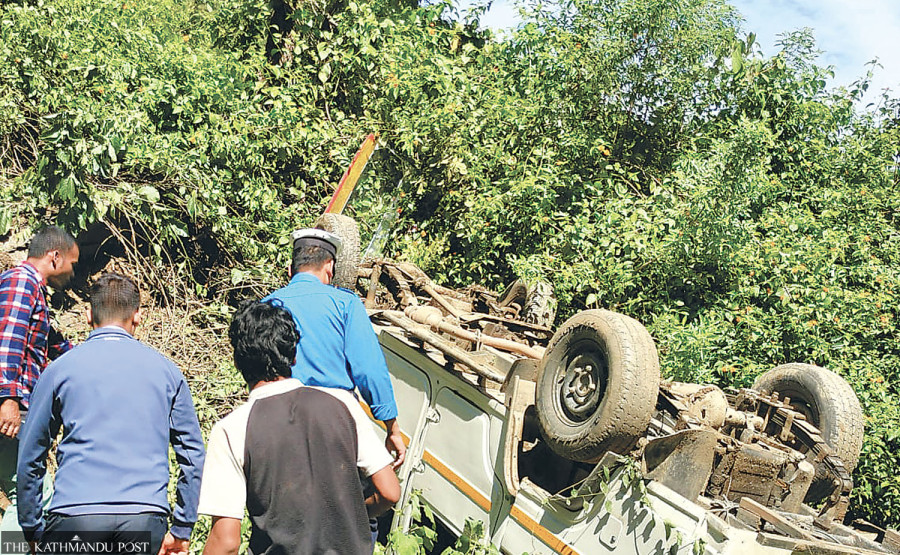
Krishna Prasad Gautam
On September 29, the Phulpati of Hindu’s biggest festival Dashain, tragedy struck along the Rapti Highway in Salyan district. A Dang-bound jeep from Rukum West crashed near the Chorkhola in Kapurkot Rural Municipality-3, killing four members of a family.
Police said the vehicle fell nearly 200 metres down the roadside slope. Prakash KC, Shashidhar KC, Pabi KC and Bina KC of Baphikot Rural Municipality-5 in Rukum West died in the accident.
“What a terrible blow right before Dashain. The whole village is in mourning,” said Purna Bahadur KC, a local leader from Baphikot-5.
“Preparations for the festival had already begun—those who had returned from outside were ready to celebrate with fanfare. But the KC family’s Dashain ended before it began, and even the neighbours couldn’t enjoy the festival after such a tragedy.”
Karnali, the country’s remotest province, has recorded 51 road crashes during the Dashain period this year, according to the Nepal Police’s Highway Safety and Traffic Management Office. Nine people died and 123 others were injured in those accidents.
In the first three months of the current fiscal year, the province has already seen 216 accidents, resulting in 24 deaths and 494 injuries. Police data show that festival seasons witness the highest number of accidents each year.
During the month-long period between Dashain and Tihar, there were 97 traffic accidents in the last fiscal year of 2024-25 and 104 in fiscal year 2023-24. Over the past three fiscal years, 83 people have lost their lives in crashes that occurred during two major festivals.
“There’s a surge in vehicle movement and passenger flow during festivals,” said Senior Superintendent of Police Bhawesh Rimal, chief of the Highway Safety and Traffic Management Office. “Accidents increase mainly due to drivers’ negligence, poor road conditions, alcohol consumption, mechanical failures, and over speeding.”
To curb the trend, police launched a special campaign this year, intensifying highway checks, patrols, and radar monitoring. Quick Response Teams were deployed to accident-prone areas, and mobile patrols were increased, said Rimal. He added that 43 passenger assistance booths were set up across the province to help travelers avoid fraud and ensure safer journeys.
Despite these efforts, traveling in Karnali during festivals remains a source of anxiety for many families—where a single wrong turn on the narrow, rugged highways can turn celebration into grief.
Most of Karnali Province’s major highways are in disrepair, forcing travelers to take life-threatening journeys during the festival season. Landslides along the Karnali Corridor, Bheri Corridor, Rapti Highway, Mid-Hill Highway and Karnali Highway have left many passengers stranded on their way home for Dashain.
“Without bridges over the rivers, we have to get off the vehicles, cross suspension bridges on foot, and then find another vehicle on the other side,” said Dinesh Budha, who was returning to Surkhet through Bheri Corridor after celebrating Dashain at his residence in Thulibheri Municipality-3 of Dolpa. “We travel on rough dirt roads relying only on luck. The roads are narrow, vehicles are overcrowded, and speed is high—traveling itself feels like gambling with life.”
The situation is no better on the Rapti Highway, where most of the blacktopped sections have peeled off. “It takes the whole day to cover just 147 kilometres from Rukum West to Dang,” said Bhola Prasad KC, a trader from Musikot Municipality-3. “The entire journey is full of fear—landslides can block the road any time, and even a short rain brings down large boulders. We often get stuck on the road for hours.”
He added that the Mid-Hill Highway is relatively better because it is wider and mostly blacktopped. But the Karnali Highway, which connects Surkhet with Jumla, remains in the worst condition—it has remained closed for 39 days this monsoon alone.
According to police, multiple landslides sometimes hit the same section up to five times in a single day, leaving travelers stranded for long periods. “The roads are narrow and most of the blacktop has worn away. At any time, landslides can fall from above,” said Ashish Devkota of Khalanga in Jumla. “Old vehicles are crammed with too many passengers. There’s always the fear that one could fall off into the Karnali river below.”
The Jumla Division Road Office has identified several high-risk locations along the Karnali Highway—Daikhola in Dailekh, Gaganekhola, Hulma, Serighat, Sunarkhola, Galli, Molpha, Sherabada, Takulla, Bhaisingauda, Timure, Galje, Ranchuli, and Dhanada in Kalikot.
“Sometimes we clear a landslide and reopen the road, only to get reports of another one an hour or two later,” said Dipendra Kumar Chaudhary, chief of the division office. “The terrain is steep, the soil is weak, and excessive blasting during road construction has worsened the risk.”
He said the office lacks funds for permanent repairs and can only conduct minor maintenance. “This year we used Rs9 million in emergency funds from the Department of Roads to build retaining walls, install wire mesh, and repair the most dangerous sections,” he added.
The highway was first blacktopped in 2015 under the federal government’s Road Sector Development Project with World Bank funding of Rs1 billion. According to the Surkhet and Jumla Division Road Offices, around Rs700 million more has been spent in the past three years alone—yet nearly 80 percent of the blacktop has already eroded.
“When it rains, the highway turns muddy; when it’s dry, it’s covered in dust,” said driver Purna Bahadur Budhthapa, who has been driving on the Karnali Highway for five years. “People who travel once rarely want to come back the same way. In many places, the road is only about five metres wide, and vehicles have to reverse to let others pass.”
Karnali Province Police Chief Deputy Inspector General of Nepal Police Madhav Shrestha said the poor road conditions have made vehicle operation difficult. “Old vehicles, overloading, and over speeding are major causes of rising accidents,” he said. “Given Karnali’s difficult terrain and the deteriorating condition of its highways, preventing road accidents is a constant challenge.”
Despite repeated investments and promises of upgrades, travel in Karnali during the festive season remains a perilous journey—where a short trip home can quickly turn into a test of endurance, patience, and luck.




 14.12°C Kathmandu
14.12°C Kathmandu